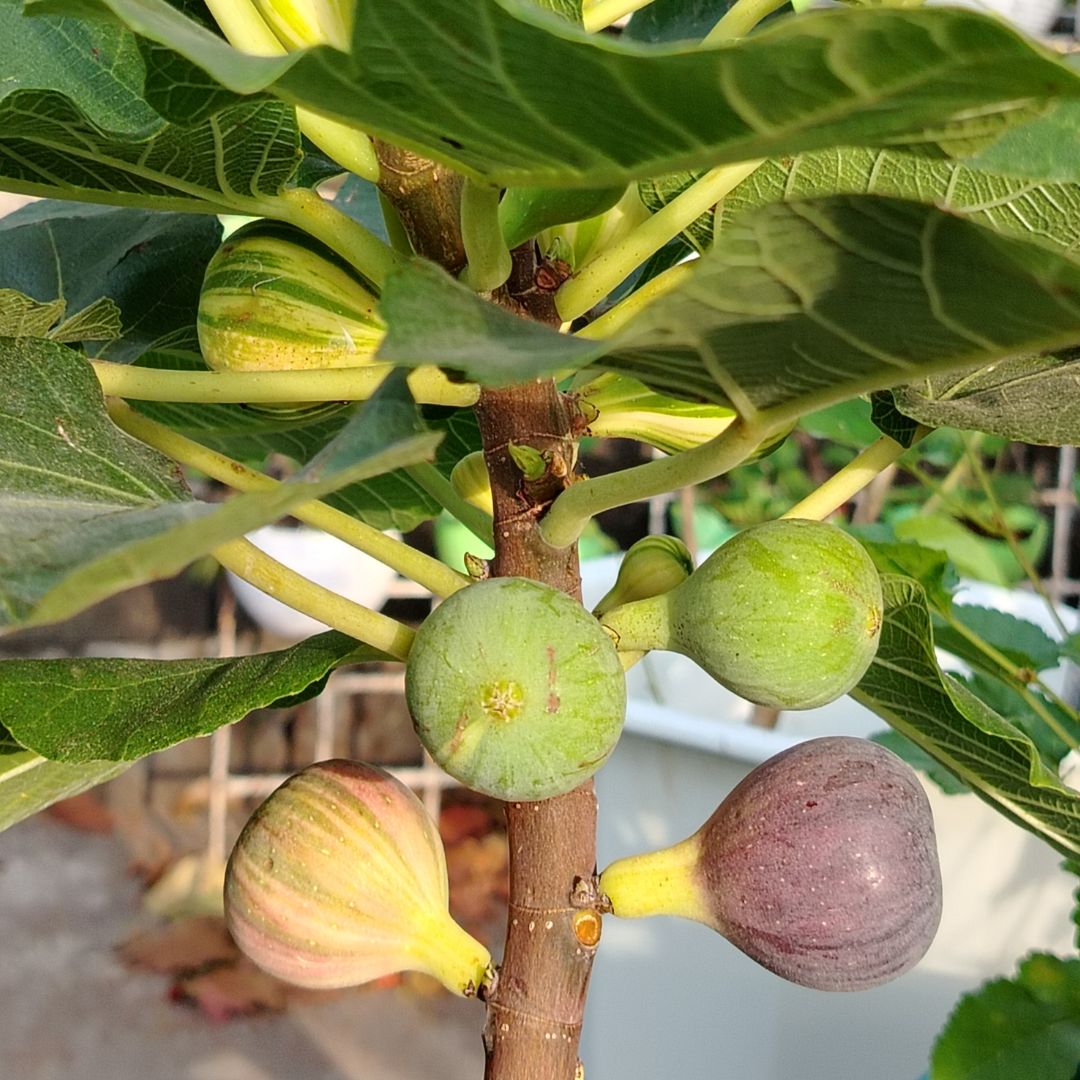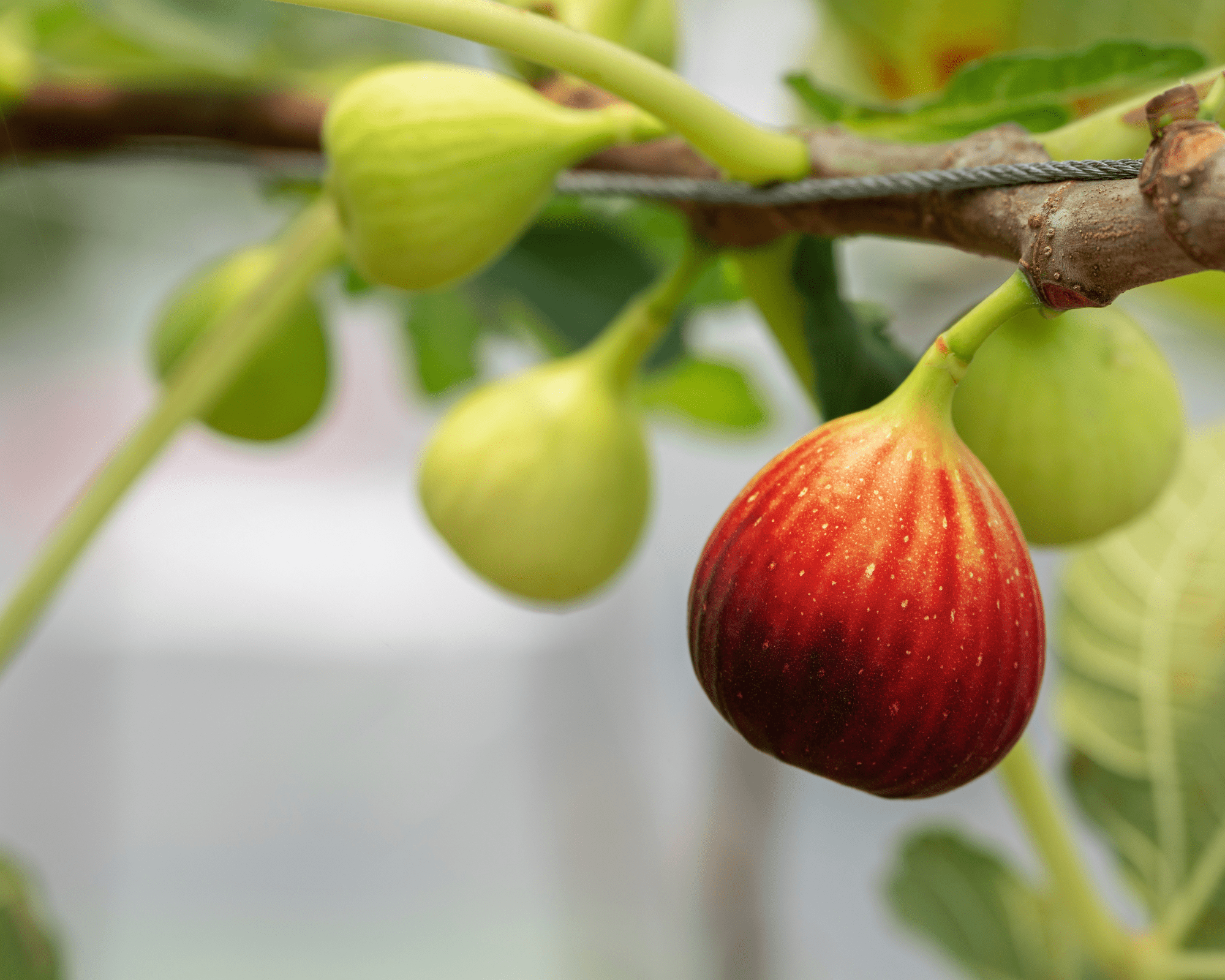Please read the full disclosure for more info. 💚
Hey there, I’m back!! 🌿 Welcome to Day 6 of my Fig Gardening Journey. Today, we’re diving into one of the most exciting and anticipated parts of fig gardening: harvesting my figs. Knowing the perfect moment to pick the figs can make a huge difference in flavor, texture, and overall fruit quality.
Unlike many other fruits, figs don’t ripen off the tree, so it’s essential to know exactly when they’re ready for harvest. In this post, I’ll walk you through the signs of ripening and share a few tips for harvesting figs at the ideal time
Signs Your Figs Are Ready to Harvest
Figs go through a unique ripening process that’s different from other fruits, so it’s important to be patient and observant. If you’re like me I never miss a single day visiting my fig garden several times. Here are a few key signs to look for when determining whether your figs are ready to pick:
1. Color Changes
One of the first indicators that a fig is ripening is its color. Figs start off green and gradually turn to a more vibrant shade. Depending on the variety of fig tree you have (e.g., Black Mission, Kadota, or Adriatic), the color may vary. Some figs will turn a deep purple, while others might become yellowish or greenish with hints of purple.
2. Softness to the Touch
As figs ripen, they become softer and squishier. Gently squeeze the fig between your fingers—if it gives a little without being mushy, it’s likely ready to harvest. However, if it’s still firm, it’s best to wait a few more days. Keep in mind that figs should have a slight softness but should not feel too squishy or overripe.
3. The “Neck” or Stem
Look closely at the neck or stem of the fig (the part where the fruit attaches to the tree). As figs ripen, the neck softens and may even begin to droop. If the neck is still stiff or upright, your fig is likely not quite ripe yet.
4. Sweet Aroma
Ripening figs tend to have a distinct, sweet fragrance. If you notice a fragrant, fruity smell emanating from the fruit, this is a good sign that it’s time to harvest. If the fig still smells fresh but lacks sweetness, it may need a few more days.
When to Harvest Your Figs
The best time to harvest your figs is in the morning, right after the dew has evaporated but before the heat of the day sets in. This is when figs are most hydrated and least likely to be damaged during picking. If you wait too long and pick your figs during the heat of the day, the fruit may be more susceptible to bruising.
Another important factor to consider is the weather. Avoid harvesting figs during a rainy period, as the fruit may not store well and could spoil quickly. Ideally, pick your figs on dry, sunny days to ensure the fruit is in its best condition for storage.
How to Harvest Figs Without Damaging the Tree
When harvesting figs, it’s essential to handle them with care to avoid damage to both the fruit and the tree. Here’s how to do it properly:
Use a Gentle Tug: Figs will naturally detach from the tree when they’re ripe. Gently grasp the fig near the base and give it a slight twist. It should come off the branch easily and no more sap. If you have to pull hard, it’s not ready yet!
Cut the Stem, Don’t Pull: For figs that are still hanging on firmly, use a sharp pair of pruning shears to snip the stem. This prevents damage to the tree and reduces the risk of breaking branches.
Use a Basket or Tray: Always use a soft, shallow basket or tray to collect the figs. Avoid using containers with sharp edges, as they can bruise or damage the fruit. The softer the container, the better!
Inspect the Figs: After harvesting, inspect each fig carefully. If any have blemishes or soft spots, use them immediately or preserve them by drying or freezing.
Can You Harvest Figs Before They Are Fully Ripe?
While it’s best to let figs ripen fully on the tree, sometimes you may need to harvest them a little early. Figs that are slightly under-ripe can still be eaten but may lack the full sweetness and flavor of ripe fruit. If you find yourself needing to pick figs before they are completely ripe (due to weather or pests), leave them to ripen off the tree for a few days at room temperature.
Storing Harvested Figs
Once your figs are harvested, proper storage is key to preserving their freshness and flavor. Here are a few tips:
Refrigerate: Fresh figs don’t last long, so I store them in the fridge for no more than 2-3 days.
Drying: If you have an abundant harvest, consider drying your figs to enjoy them for months to come. You can air-dry them, use a dehydrator, or even bake them in the oven at a low temperature.
Freezing: Figs freeze very well. Slice them in half, remove the stem, and freeze them on a baking sheet before transferring them to a zip-top bag.
Final Thoughts: Timing Is Everything!
Knowing when to harvest your figs can make all the difference in taste, texture, and overall fruit quality. By paying attention to the signs of ripening—color, softness, fragrance, and stem condition—you’ll be able to pick your figs at the perfect time.


